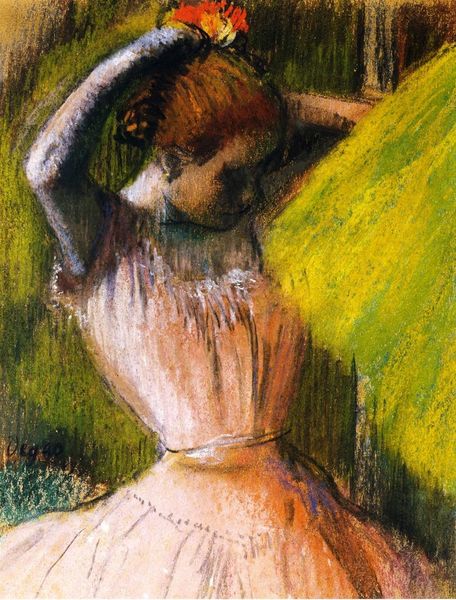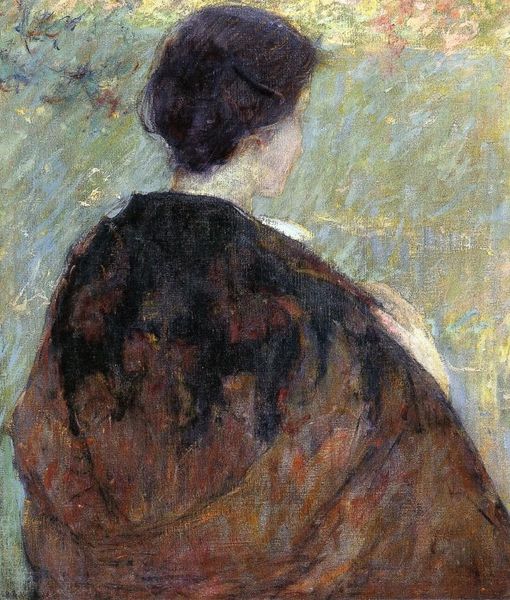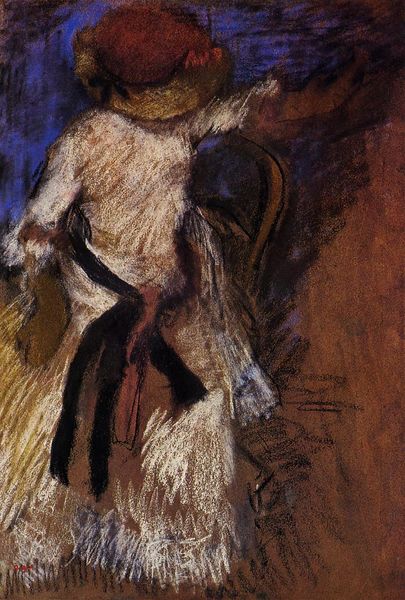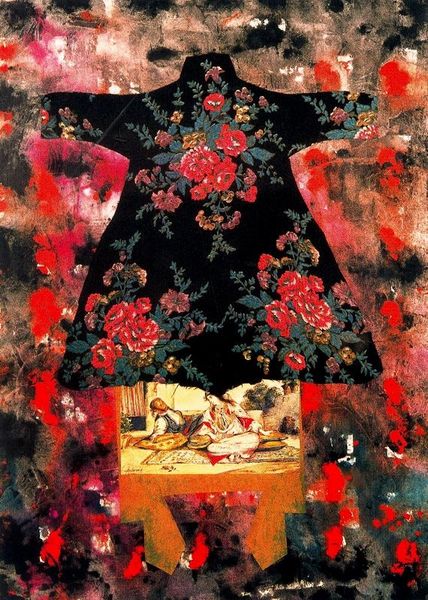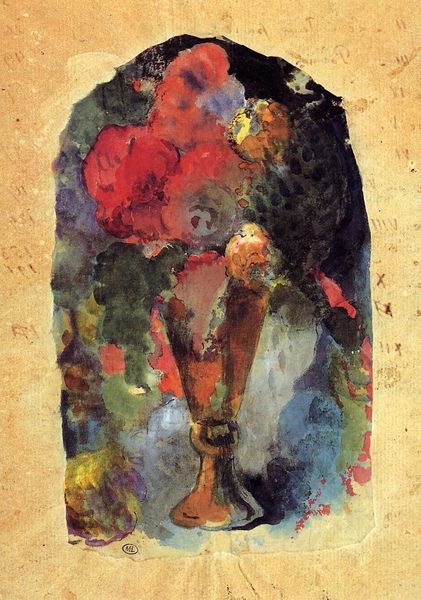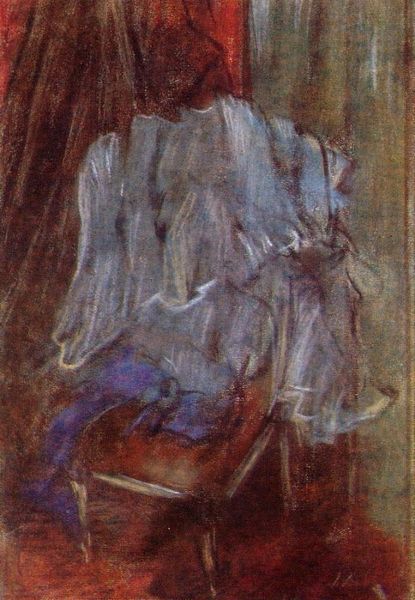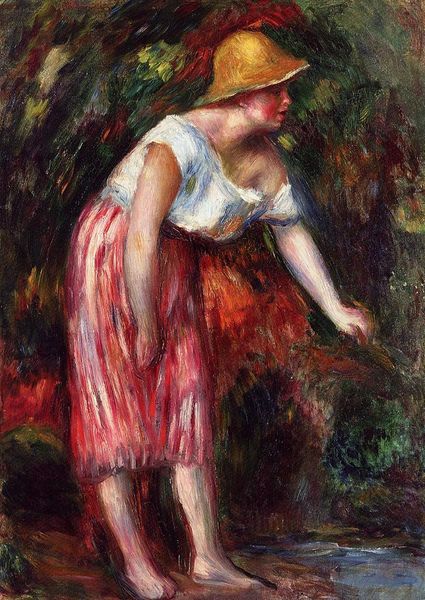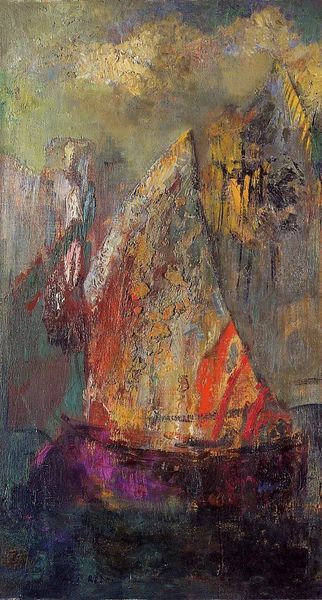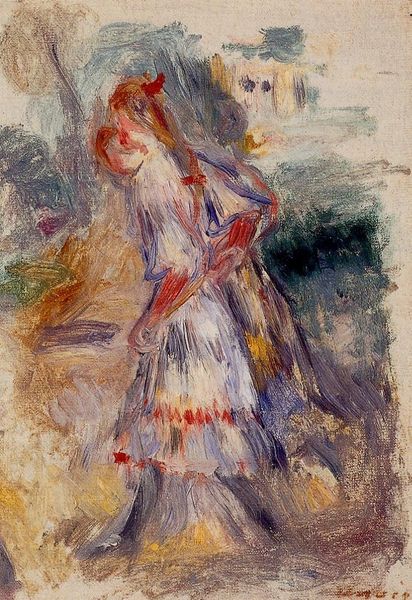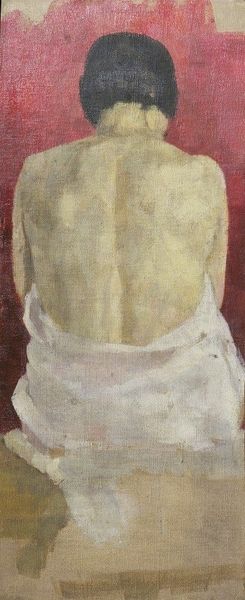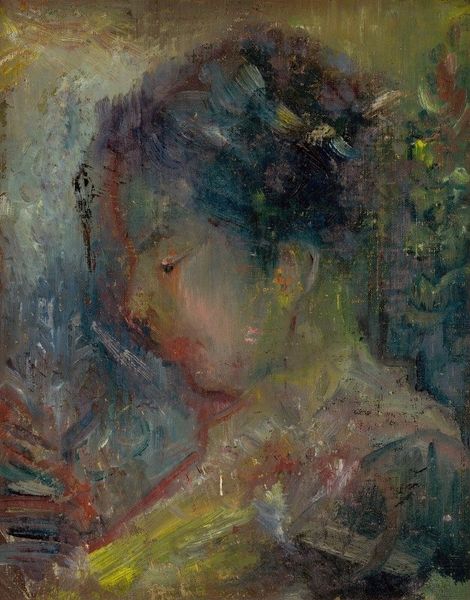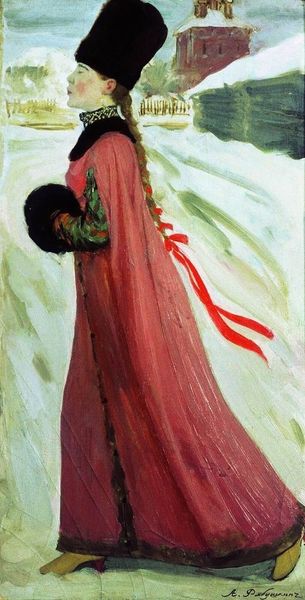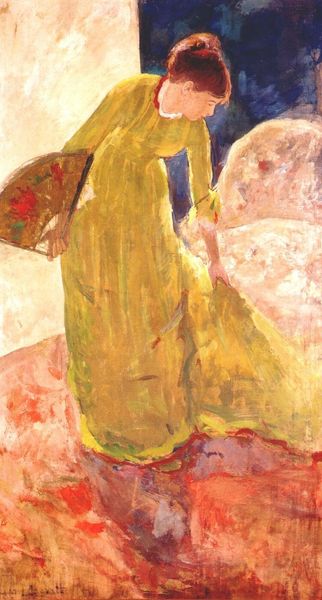
painting, oil-paint
#
portrait
#
painting
#
impressionism
#
oil-paint
#
oil painting
#
female-nude
#
genre-painting
#
nude
Copyright: Public domain
Curator: What strikes me immediately about Edgar Degas' "Woman in a Blue Dressing Gown, Torso Exposed," created around 1890, is its intense interiority. The pose, the color...it feels almost voyeuristic. Editor: Voyeuristic, certainly, but I see it more as an observation of labour and material culture. This is a woman at work on her toilette, involved in the labor of managing and beautifying her body, using everyday materials for that purpose. Curator: Interesting perspective. Looking at the composition though, notice how the upward gaze is framed by the implied circularity of her arms? The texture of the oil paint adds a real dynamism, especially in the swirling brushstrokes surrounding her form. There’s almost an echo of Rococo softness meeting Impressionistic energy. Editor: Agreed. However, beyond aesthetics, we should consider the accessibility of beauty standards and rituals for working class women in 1890's France. Degas here represents an enactment of often unattainable norms; and although he depicts the tools - her blue dressing gown and perhaps hair accessories - these items carry class and cultural connotations about women's changing labor roles at the turn of the century. Curator: I see your point. Even that particular shade of blue, it really draws the eye and, contrasted against the pinks and yellows in the background, sets a mood of slightly melancholy grace. And yet her face remains obscured; almost depersonalized. Editor: Precisely. It reminds us of the countless unnamed, often invisible, women who were vital to maintaining social hierarchies; consider them essential to domestic industries as well. This nude therefore isn't merely about displaying the female form, but also subtly unveils an intersection between femininity, work, and social performance. Curator: A nuanced reading, certainly. This piece prompts many questions beyond mere representation; questions about value, about perception and about the very material conditions of existence. Editor: Ultimately, Degas offers us an intriguing tableau that stimulates conversation, simultaneously through an aesthetic appreciation and through a socially mindful consideration.
Comments
No comments
Be the first to comment and join the conversation on the ultimate creative platform.
